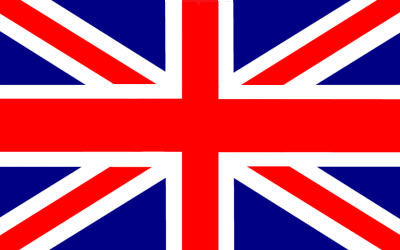Nesting Boxes

Swallow houses are situated in the immediate vicinity of objects where there is a medium to heavy swallow population.
The swallow house provides the birds with an attractive alternative and attracts them away from the object to be protected.
The swallow house should be situated in the immediate vicinity / visual range of the populated object. The distance of the swallow house to the object can be increased after an appropriate time when the birds have settled-in.
A swallow house comprises of:
A welded and galvanised metal frame, wooden planks and plywood, rendering base, bitumen shingles, house martin nests made of wood concrete, guide rails for the drawer system and fixing material.

Very suitable for the following birds: great-, blue, marsh, coal and crested tit; also common redstart, nuthatch, pied flycatcher, wryneck, tree- and house sparrow, possibly even bats.
The nesting boxes are not only used for breeding and raising young, but also as protected hibernation places in winter.
Material: wood concrete
Colour variations:
- Body red / front wall light grey
- Body brown / front wall light brown
- Body olive green / front wall light grey

STARLING NESTING BOX WITH MARTEN PROTECTION
Very suitable for the following birds: great-, blue, marsh, coal and crested tit; also common redstart, nuthatch, pied flycatcher, wryneck, tree- and house sparrow, and bats.
Protection against cats and martens is given with a protruding entrance. Nevertheless, sight of the brooding chamber is not impaired for control and cleaning.
Material: wood concrete
Entrances available:
- Round 34 mm
- Oval 32 x 45 mm
- Round 45 mm

Special nesting boxes for the tree creeper and the short-toed tree creeper.
As both species like contact with a tree trunk, the tree creeper nests are half-shell shaped. Thus, the side to the tree trunk is open and the tree creeper can search for insects with its forceps beak.
The treecreeper nest with detachable front wall enables easy control and cleaning. It is hung on two aluminium nails.
The tree creeper nest without a detachable front wall can be completely folded away from the tree trunk. It is hung on an aluminium nail and also bound to the tree with wire. Thus, the upper and lower sealing lips press
against the rough bark and prevent
water ingressing.
- Material: wood concrete
- Colour: classical brown

Very suitable for the following birds: house-, and tree sparrow, also the black redstart.
Material: wood concrete.
External dimensions: height 24.5 x width 43 x depth 20 cm.
Breeding chamber dimensions: the three breeding chambers are each: height 16 x width 10.5 x depth ca. 15 cm.
Weight: ca. 15 kg
Colour: body light grey, front wall in a light brown tone.

WREN BALL WITH MARTEN PROTECTION
The ball shaped nesting box provides the wren with the special nesting opportunity necessary for rearing its brood.
Material: wood concrete
Overall dimensions:
- Ball diameter: ca. 18.5 cm
- Entrance hole: 30 x 27 mm
- Suspension length: ca. 20 cm
Colour options:
- Ivy green
- Autumn light red

Although the barn swallow is also a social animal the nests should be hung individually and at least one metre from each other.
Material: breeding cup of wood concrete and formaldehyde-free chipboard.
Dimensions: height: 11 cm, length: 25 cm, depth: 14 cm
Weight: ca. 2.7 kg

The kestrel preys on small ground animals. It is very popular with farmers as ca. 85% of its prey are field- and other mice. The kestrel is a very territorial bird.
Installation: on individual trees, quiet forest edges, barns, power pylons, silos etc. In urban areas the following are recommended: large structures such as high walls, chimneys, industrial buildings, churches etc.
Installation height: 6 to 8 metres.
Direction of opening: southeast or wind-protected direction.
Dimensions:
- Overall dimensions: width 33 cm, depth 45 cm, height 36 cm
- Breeding room: width 30 cm, depth 30 cm, height 34 cm
- Entrance: 17 x 24 cm, supply also includes perch

The peregrine falcon is a welcome guest in our cities because it preys exclusively on birds and sets wild city pigeons under heavy pressure. It is therefore the most natural and cheapest method of controlling pigeons.
Installation: e.g. quarries or high structures such as towers, silos, high-rise buildings, industrial buildings, or motorway bridges (e.g. at/on the abutments).
Height: from 25 – 30 m upwards, as a rule
Direction: in an easterly or northerly direction have proved satisfactory
Material: special, high-strength, reinforced light-weight concrete
Dimensions and weight:
- Overall dimensions: depth 130 x width 80 cm height 73 cm
- Internal dimensions: depth 72 x width 67 x height 54 cm
- Box weight: ca. 260 kg
Scope of supply:
- Box with integrated drainage holes
- Removable inspection flap
- Perch
Optional accessories:
- Wall mounting bracket (article number :V-0802)

The swift is threatened with extinction. It prefers to live in colonies. Therefore, the installation of several nesting boxes is recommended.
Installation: on exterior facades or close to the roofs of any type of building.
Installation height: at least 6 – 7 metres above the ground. Clear access must be ensured.
Material: asbestos-free fibre reinforced concrete and wood concrete. Galvanised installation fittings.
Dimensions and weight of basic type:
- Overall dimensions: height 15 x depth 15 x length 34 cm
- Internal dimensions: 14 x 14 cm
- Weight: ca. 3.1 kg



